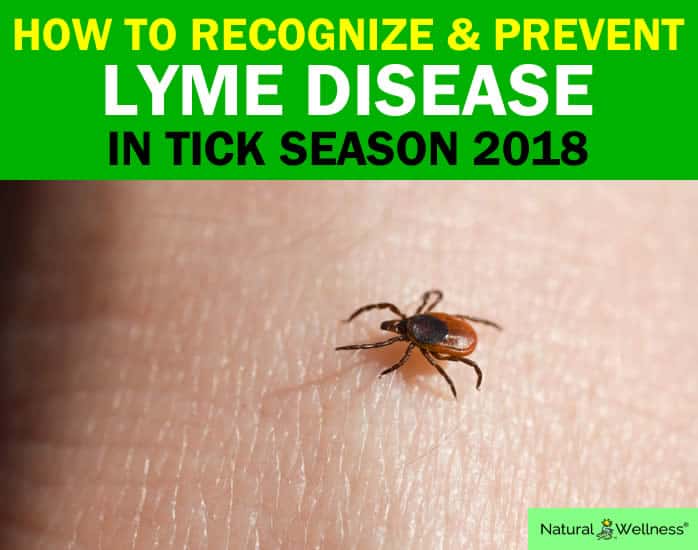

If fantasy vampires resembled the actual bloodsuckers of the animal kingdom, we’d have a lot fewer Twilight movies to contend with. With a face only a mother could love and a belly full of disease, ticks are nasty little critters. If you have the misfortune to be bit by a deer tick (Ixodes scapularis), there’s a chance you’ll contract Lyme disease. Though rarely life-threatening, the infection can cause a host of unpleasant issues if left untreated.
Tick season generally lasts from April to September, which puts us right in the middle of it. Unfortunately, deer ticks (also known as black-legged ticks and bear ticks) can survive in cold temperatures, so you can’t count on the first frost to protect you from Lyme disease.
Recognizing the of symptoms of Lyme disease is crucial to your health, especially in areas of the U.S. where ticks are rampant. Here’s what you need to know…
Lyme Disease Can Look Like a Lot of Other Things
Lyme disease is insidious, and its symptoms can vary widely – or even be nonexistent! After a bite, it may be weeks, months, or years before the first sign of infection occurs. Some people exhibit a rash after they’re bitten. For other people, there’s no external sign at all until they develop arthritis.
8 Common Symptoms That May Accompany a Lyme Disease Infection
- Fever
- Rash
- Chills
- Headache
- Muscle aches
- Joint pain
- Fatigue
- Swollen lymph nodes
These are the same general symptoms of flu or chronic fatigue syndrome, which is why it’s so easy to misdiagnose. The neurologic symptoms that develop later can also resemble multiple sclerosis.
If left untreated, more serious symptoms will develop, such as neck stiffness, facial palsy, nerve pain and gaps in short-term memory.
Lyme Disease Can Be Treated
Lyme disease can be cured if it’s caught early enough. Patients will be given a course of antibiotics and usually recover quickly. Even in cases where the disease is caught later, there’s still a good chance that it can be successfully treated. However, permanent damage to the nervous system or joints is possible.
Did you know that the risks of Lyme disease are even greater if you have liver inflammation? Learn more about the connection between Lyme disease and Hepatitis.
Ticks Are Everywhere
You’ll find deer ticks on both coasts of the United States. On the east coast, they generally range from northeastern Virginia to Maine. In the west, they’re more predominant in northern than southern California. They can also be found in central states, such as Wisconsin and Minnesota.
Only deer ticks spread Lyme disease, but that’s not the only disease that ticks can spread. Like mosquitoes, ticks transmit bacteria and even viruses to humans when they feed, including babesiosis, anaplasmosis, Rocky Mountain Spotted Fever and tularemia.
Ticks Are Climbers
Ticks don’t fly or jump, and they tend to stay out of trees, so there’s small chance of one dive-bombing you from the canopy. If you find one on your body, even on your scalp, it probably crawled there from the ground. Ticks will hitch a ride on your shoe or leg and then crawl to your head and ears – that’s their favorite place to bite.
Because ticks are climbers, it’s important to check yourself thoroughly after walking in the woods or being outdoors.
How to Remove a Tick
If you catch a tick while it’s still mid-bite, don’t panic. Using your fingers or a match is not recommended. Instead, use a pair of sharp tweezers. As www.TickEncounter.org explains, a tick’s body is basically “a little germ-filled balloon. Squeeze it too hard on its back end and all the germs get pushed to the front end, which…is attached to you by the tick’s straw-like mouthpart.” You don’t want to squish that gunk into your bloodstream.
Using sharp tweezers, gently remove the tick like a splinter. It’s okay if the head remains embedded, since the real bad stuff is in the body (don’t forget to remove it with a second pass, though). If you have a small baggy or jar handy, it’s a good idea to keep the tick to bring with you to the doctor’s office. That can help them to identify the type of tick and whether or not it carries Lyme disease.
Always check your body and clothes after a walk in nature, and take precautions before heading outside.




